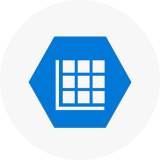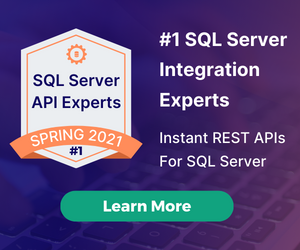Rate Limiting in Multi-Tenant APIs: Key Strategies
by Terence Bennett • March 28, 2025
Rate limiting ensures fair API usage, protects system performance, and prevents resource overload in multi-tenant environments. Here's what you need to know:
- What is Rate Limiting? It controls API traffic by limiting requests (e.g., 1,000 requests/minute). Exceeding limits triggers a "429 Too Many Requests" response.
- Why It Matters: It prevents system overload, ensures fair resource distribution, and protects against abuse (e.g., DoS attacks).
- Key Algorithms:
- Token Bucket: Allows controlled bursts with refill limits.
- Leaky Bucket: Smooths traffic spikes with steady request handling.
- Sliding Window: Tracks requests over a moving time frame for accuracy.
- Service Tiers: Define usage limits (e.g., Basic: 10,000 requests/day; Enterprise: 250,000 requests/day).
- Dynamic Adjustments: Automatically modify limits based on system load or resource usage.
|
Algorithm |
Memory Usage |
Accuracy |
Best For |
|---|---|---|---|
|
Token Bucket |
Low |
Moderate |
Handling bursts |
|
Leaky Bucket |
Medium |
High |
Smoothing spikes |
|
Sliding Window Log |
High |
Excellent |
Precise rate limiting |
Pro Tip: Use tools like DreamFactory for built-in rate limiting and traffic management. It simplifies tenant isolation, dynamic adjustments, and monitoring.
Rate limiting is essential for fair, secure, and reliable API performance in multi-tenant systems. Dive into the full article for detailed strategies and examples.
What is Rate Limiting / API Throttling?
Rate Limiting Algorithms
Advanced rate limiting algorithms help fine-tune performance, especially in multi-tenant environments. Each method offers unique ways to manage traffic and maintain system stability.
Token Bucket Method
The token bucket algorithm allows controlled bursts while enforcing overall limits. Each tenant is assigned a "bucket" that fills with tokens at a steady rate. For example, a bucket might gain 100 tokens per minute, and each API request consumes one token.
Key parameters include:
|
Parameter |
Description |
Example Value |
|---|---|---|
|
Bucket Size |
Maximum tokens allowed |
1,000 tokens |
|
Refill Rate |
Tokens added per time unit |
100 tokens/minute |
|
Burst Allowance |
Maximum instant consumption |
200 requests |
DreamFactory allows you to customize token bucket settings to suit your needs. For another approach to smoothing traffic spikes, consider the leaky bucket algorithm.
Leaky Bucket Method
The leaky bucket algorithm ensures a steady outflow rate, smoothing traffic spikes and maintaining consistent API performance. It works like a bucket with a fixed outflow, regulating request handling.
Key features:
|
Feature |
Benefit |
Impact |
|---|---|---|
|
Fixed Processing Rate |
Predictable resource usage |
Stable system performance |
|
Queue Management |
Handles traffic spikes |
Prevents overload |
|
Consistent Output |
Even request distribution |
Better resource allocation |
This method ensures consistent performance under varying traffic loads. For even finer control, sliding window methods offer another option.
Sliding Window Methods
Sliding window algorithms come in two main types: Counter and Log.
- Counter Method: Tracks the number of requests within a moving time frame.
- Log Method: Records timestamps of each request for precise rate limiting.
The sliding window counter method is particularly effective in multi-tenant environments. It avoids edge-case bursts by evaluating requests over the past 60 minutes, rather than resetting counts at fixed intervals. For instance, with a limit of 1,000 requests per hour, the system continuously monitors the last hour of activity.
Comparison of methods:
|
Method |
Memory Usage |
Accuracy |
Overhead |
|---|---|---|---|
|
Counter |
Low |
Good |
Minimal |
|
Log |
High |
Excellent |
Moderate |
|
Hybrid |
Medium |
Very Good |
Low-Medium |
Choosing the right algorithm depends on tenant numbers, traffic patterns, and available resources. The token bucket method often strikes the best balance, handling bursts effectively while maintaining overall traffic control.
Multi-Tenant Rate Limits by Tier
Setting Service Tiers
Service tiers allow you to define API access and usage quotas tailored to different business needs and tenant requirements.
|
Tier Level |
Request Limit |
Burst Allowance |
Concurrent Connections |
|---|---|---|---|
|
Basic |
10,000/day |
100/minute |
25 |
|
Professional |
50,000/day |
500/minute |
100 |
|
Enterprise |
250,000/day |
2,500/minute |
500 |
|
Custom |
Flexible |
Flexible |
Flexible |
These tiers guide the setup of rate limits for each service level.
Rate Limits for Each Tier
Tier-specific rate limits can be enforced using resource quotas and automated server-side scripts.
Key steps to implement these limits:
- Assign resource quotas to each tier and monitor usage to determine appropriate thresholds.
- Analyze API usage patterns to fine-tune limits for different tiers.
- Define policies for handling situations where limits are exceeded.
This structured approach ensures smooth operations, even during peak usage.
Adjusting Limits in Real Time
Rate limits can be dynamically adjusted through automated server-side scripts, depending on system conditions:
|
Condition |
Adjustment Action |
Recovery Period |
|---|---|---|
|
High System Load |
Reduce limits by 25% |
15 minutes |
|
Database Congestion |
Throttle write operations |
5 minutes |
|
Network Saturation |
Decrease concurrent connections |
10 minutes |
|
Low Resource Usage |
Increase limits by 10% |
30 minutes |
DreamFactory makes these adjustments seamless through its API key management, allowing automated responses to changing conditions.
Metrics to monitor for effective adjustments include:
- Response Times: Keep an eye on average and 95th percentile latency.
- Error Rates: Track failed requests and timeouts.
- Resource Utilization: Monitor CPU, memory, and network usage trends.
- Queue Depths: Check request queues across different tiers.
These dynamic adjustments help maintain consistent performance and ensure fair resource distribution across tenants.
Tenant Traffic Isolation
Ensuring tenant traffic is properly isolated is key to maintaining security, avoiding resource conflicts, and promoting fair usage in multi-tenant APIs. Below are practical ways to achieve this.
API Key Separation
Give each tenant a unique API key. This allows you to monitor usage, enforce rate limits, and manage access effectively. It works hand-in-hand with the rate-limiting techniques outlined earlier.
Namespace Division
Organize tenant traffic by setting up separate namespaces. Use clear naming conventions, strict access controls, and precise mappings between tenants and resources. This adds another layer of control to your rate-limiting efforts.
DreamFactory Integration

For an added boost, combine these methods with an advanced API management platform like DreamFactory. Its built-in tools, such as API key management, simplify tenant isolation and offer options for custom setups [1]. This integration automates much of the process while maintaining flexibility.
Multi-Tenant Rate Limiting Guidelines
Managing rate limits in a multi-tenant environment requires careful planning and constant monitoring. By using proven algorithms and isolating tenant resources, you can maintain system performance and ensure fair usage.
Central Limit Control
Set up global policies to manage resources, but keep them flexible. Adjust limits based on traffic patterns and allow specific overrides for tenants with unique needs. Use server-side scripting to enforce rules for situations like peak usage, high-demand operations, or emergencies. Pair these controls with real-time monitoring to tweak policies when needed.
System Monitoring
After implementing global policies, keep a close eye on system performance to catch issues early. Focus on metrics that reveal how the system is handling traffic.
Key metrics to track:
- Request volume per tenant
- Response times
- Error rates
- Resource usage
Set up alerts for:
- Breaches of rate limit thresholds
- Unusual spikes or drops in traffic
- Prolonged high usage
- Signs of performance issues
Load Management
During periods of heavy traffic, use these strategies to maintain stability:
- Progressive throttling: Gradually reduce limits for non-critical operations during high load.
- Priority queuing: Process critical tasks first while ensuring fair access for all tenants.
- Graceful degradation: If the system is under extreme strain, scale back services in stages - start by limiting bulk operations, then throttle non-essential endpoints, and finally apply emergency limits to protect core functionality.
DreamFactory for Multi-Tenant APIs
DreamFactory Features
DreamFactory simplifies multi-tenant API management by automatically creating secure, production-ready APIs - often in as little as 5 minutes [1]. The platform includes a robust security framework with Role-Based Access Control (RBAC) and support for multiple authentication methods like OAuth and SAML.
With deployment options on Kubernetes or Docker, DreamFactory supports over 20 database connectors, including Snowflake, SQL Server, and MongoDB. This makes it easier for organizations to maintain consistent rate limiting and security policies across various data sources.
Rate Limiting with DreamFactory
DreamFactory provides precise rate limiting controls through server-side Python scripting. Administrators can set tenant-specific rate limits and create custom throttling rules, ensuring both performance and security are optimized for multi-tenant environments.
"DreamFactory streamlines everything and makes it easy to concentrate on building your front end application. I had found something that just click, click, click... connect, and you are good to go." - Edo Williams, Lead Software Engineer, Intel [1]
Multi-Tenant Benefits
DreamFactory combines security, performance, and cost savings to deliver a strong solution for multi-tenant environments. It can reduce common security risks by 99% and save organizations an average of $45,719 per API implementation [1].
"DreamFactory is far easier to use than our previous API management provider, and significantly less expensive." - Adam Dunn, Sr. Director, Global Identity Development & Engineering, McKesson [1]
Key advantages for multi-tenant deployments include:
|
Feature |
Benefit |
|---|---|
|
Cuts development time to 5 minutes per endpoint [1] |
|
|
Built-in Security Controls |
Ensures consistent security across tenants |
|
Server-side Scripting |
Enables tenant-specific customizations |
Summary
Rate limiting plays a key role in managing multi-tenant API systems. Techniques like token bucket, leaky bucket, and sliding window offer solid methods for controlling API usage. When paired with tenant isolation strategies - such as API key separation or namespace division - these approaches help maintain performance and protect each service tier.
Here are some important components to consider:
|
Component |
Benefits |
|---|---|
|
Tiered Rate Limits |
Ensures fair resource distribution based on service levels |
|
Tenant Isolation |
Avoids noisy neighbor problems and enhances data security |
|
Central Control |
Simplifies the management of throttling policies |
|
Real-time Monitoring |
Enables quick adjustments to limits as system demands change |
Modern API management platforms make these processes easier. For instance, DreamFactory's automated API generation minimizes setup time while maintaining strong security measures, reducing risks and helping control costs [1].
When designing your rate limiting strategy, keep these priorities in mind:
- Scalability: Ensure your solution grows as the number of tenants increases.
- Flexibility: Adapt limits to match changing usage patterns.
- Monitoring: Keep a close eye on API usage across all tenants.
- Automation: Leverage tools to simplify management and adjustments.
Terence Bennett, CEO of DreamFactory, has a wealth of experience in government IT systems and Google Cloud. His impressive background includes being a former U.S. Navy Intelligence Officer and a former member of Google's Red Team. Prior to becoming CEO, he served as COO at DreamFactory Software.


























